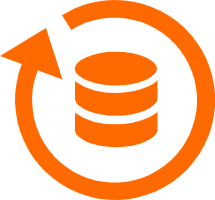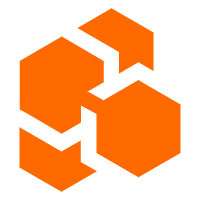Alibaba Cloud OSS now integrates with Veeam Backup and Recovery 9.5 Update 4, providing fast, durable, and unlimited storage for off-site storage in public cloud.
When backing up the on-premises virtual machines (VMs) or cloud VMs, customers often face a challenge of handling the backups in a reliable, secure, and cost effective manner. As part of a robust backup and restore strategy, business are often required to answer following questions –
Veeam is one of the leaders in the backup and recovery space with thousands of customers leveraging Veeam products as part of their backup and recovery strategy. However, the above listed concerns have been rendered valid for most of those customers as they look to cut costs and increase efficiencies across their IT domains.
Veeam customers have been looking at cloud options to solve these complex backup and recovery problems, Alibaba Cloud being one of them. Alibaba Cloud offers various storage products, each of which has its own applicability depending upon the customer's use case. The prominent ones being:
So far, the Alibaba Cloud solution for Veeam customers has been around building complex solutions involving a Cloud Storage Gateway (CSG) or using expensive storage options like NAS. Though those solutions are still very much valid and effective, they don't really tick all the boxes when it comes to building a stable and cost effective backup strategy.
Alibaba Cloud Object Storage Service (OSS) now integrates with Veeam Backup and Recovery 9.5 Update 4 released in January, 2019. This means that Veeam customers can now have access to very fast, durable, and unlimited storage for their off-site storage in public cloud. At the same time, the solution is easy to implement without deploying any cloud gateways to move the data to cloud.
Object Storage Service from Alibaba Cloud provides storage and archival for unlimited amount of data in cloud. OSS is designed for 99.999999999% (11 9s) durability and 99.99% availability. The prominent features being:
To learn more about Alibaba Cloud OSS, visit https://www.alibabacloud.com/help/doc-detail/31817.htm
In this tutorial, you have learned how to use certificates to implement database backup encryption in SQL Server 2014 and later.
When it comes to database security, preventing security risks due to database backup files being leaked is a very important security and prevention topic. This topic aims to ensure the security of user data in case the backup file of the user database leaks. Prior to SQL Server 2014, the industry commonly used TDE technology to implement and prevent files from being leaked out of the database. However, TDE works by encrypting all the user data before storing it to the disk, and decrypting it when it is read. This behavior of encrypting while writing and decrypting while reading will inevitably result in reduced query performance and increased CPU usage (for more information about the impact on the performance and CPU, see this article SQL Server Transparent Data Encryption (TDE) Performance Comparison). Then, is a technology available that can not only ensure the security of backup files, but also take into account the user query performance and CPU resource consumption? This is the database backup encryption technology that we are going to introduce today. This technology was first introduced in SQL Server 2014. The SQL Server 2014 Enterprise edition and Standard edition support backup encryption, while the SQL Server 2014 Web edition and Express edition support restoring encrypted backup files.
While backups and snapshots are similar, they should not be considered as interchangeable. This blog explains their similarities and differences.
As the person responsible for one or more servers, one of your most important tasks is to design and implement an effective backup strategy. Having recent, reliable backups guarantees your ability to recover from a whole host of events that would otherwise spell disaster for the server and possibly your entire business. Such events include a ransomware or virus attack, a serious system crash, data corruption caused by hackers, or a mistake made by a system administrator such as inadvertently formatting the wrong disk.
When you're working with servers on Alibaba Cloud, and indeed with any other cloud provider too, you will notice that you are often provided with a choice between taking a backup or a snapshot. While backups and snapshots are similar, they should not be considered as interchangeable.
A conventional backup comprises a copy of one or more files. Those files might be users' documents on a file server, HTML or PHP files on a web server, email messages on a mail server, and so on. To create file-level backups on an ECS server from Alibaba Cloud, you can use the Hybrid Backup Recovery application (HBR) that is available from the management console and lets you create a cloud-based vault in which to safely create and store a backup until it is required. For added security and resilience, this can back up to multiple Alibaba Cloud geographic regions. Everything happens very quickly, because backups take place across Alibaba Cloud's own internal network.
An HBR backup plan allows you to specify which files and directories get included and excluded, how often the backup job should run, and how long to store the backup before it is automatically deleted. You can also start a backup job manually on demand whenever you wish. Restoring one or more files from a backup can be performed quickly and easily from the web-based management console by anyone who is authorised to use it.
Backing up conventional files such as documents and programs is pretty straightforward. In the case of databases, however, some additional consideration is required. Even though databases are stored on disk as conventional files, you can't simply back up those files like any others because you can't be confident that they are in a stable state. The Hybrid Cloud Recovery solutions takes care of this automatically, and can thus be used to back up and restore databases such as SQL Server, MySQL and Oracle.
It's important to remember that file-level backups are designed to protect you from incidents (malicious or accidental) that affect one or more files, rather than the entire integrity and stability of the server as a whole. Even if you back up the entire file system, including all of the operating system files, you will still not be able to restore the entire server in the event of a disaster such as a corrupted boot record. Or indeed from any other event which is sufficiently serious to prohibit you from gaining access to the server in order to run the restore process. For such cases, a snapshot is a better option.
If you do wish to create a backup of an entire server, you can install and use a third party backup utility. One leading product is Veeam Backup. As of version 9.5 Update 4, Veeam now fully supports Alibaba Cloud's Object Storage Service (OSS), which allows for unlimited amounts of data stored in cloud-based vaults. This can be used to create partial or full backups of servers both cloud-based and on-premises.
Simple Application Server is a new generation computing service for stand-alone application scenarios. It provides one-click application deployment and supports all-in-one services such as domain name resolution, website publishing, security, O&M, and application management. This optimizes the user experience of setting up a simple application and makes it easier for entry-level users to use cloud computing products.
Alibaba Cloud Elastic Compute Service (ECS) provides fast memory and the latest Intel CPUs to help you to power your cloud applications and achieve faster results with low latency.
Database Backup (DBS) is a secure and cost-efficient solution for continuous data protection. The service offers strong protection for data stored in multiple environments, such as enterprise data centers, hybrid clouds, public clouds, and third-party cloud vendors. Through this course, you will not only learn about Alibaba Cloud DBS technical essentials and applicable scenarios, but also by watching product console demos, you will be familiar with DBS major functions and operation details.
The security of the cloud databases are critical, they are directly affecting the security and stable operation of the cloud based applications. Only by understanding the principles, methods, and operation methods of backup and recovery of commonly used cloud databases, the cloud database administrators can better protect them. Through this course, you can not only understand the backup and recovery principles, types and methods of databases on the cloud, but also understand the backup and recovery methods related to Alibaba Cloud RDS.
You can use Hybrid Backup Recovery (HBR) to back up Alibaba Cloud Network Attached Storage (NAS) files and restore the files in a timely manner if they are lost or damaged.
A NAS file system that complies with the NFS or SMB protocol is created for backup. For more information, see Create a file system.
Before you use NAS to back up and restore the objects, note the following items:
DBS offers features such as full backup, incremental backup, and data recovery. You can manage and configure backup plans at any time.
On the backup plan details page, click Configure backup source to change the database settings such as its location and IP address. The steps are the same as described in Configure a backup plan.
On the backup plan details page, click Configure backup object to change the database objects for backup. The steps are the same as described in Configure a backup plan.
On the backup plan details page, click Backup Schedule to change the time settings of the backup plan. The steps are the same as described in Configure a backup plan.
On the backup plan details page, click set lifecycle to change the lifecycle settings of the backup plan. The steps are the same as described in Configure a backup plan.
Learn about cloud database security concepts, MySQL and SQL Server backup and recovery concepts, types, and methods.
Availability for ALL workloads — virtual, physical and cloud Veeam® Backup & Replication™ 9.5 Update 3 brings backup and replication together into a single software solution. It delivers Availability for ALL workloads — virtual, physical and cloud — from a single management console, extending Veeam's leadership position from being the best for VMware vSphere and Microsoft Hyper-V to #1 Availability for any app, any data on any cloud.
Empower Your Business Digital Transformation with Tools and Cloud Services

2,599 posts | 769 followers
FollowAlibaba Cloud New Products - June 2, 2020
ApsaraDB - December 5, 2018
Alibaba Developer - December 16, 2021
Alibaba Clouder - November 4, 2020
Alibaba Cloud Community - April 24, 2022
Alibaba Clouder - March 26, 2019

2,599 posts | 769 followers
Follow Database Backup
Database Backup
A reliable, cost-efficient backup service for continuous data protection.
Learn More Cloud Backup
Cloud Backup
Cloud Backup is an easy-to-use and cost-effective online data management service.
Learn MoreMore Posts by Alibaba Clouder
Start building with 50+ products and up to 12 months usage for Elastic Compute Service
Get Started for Free Get Started for Free